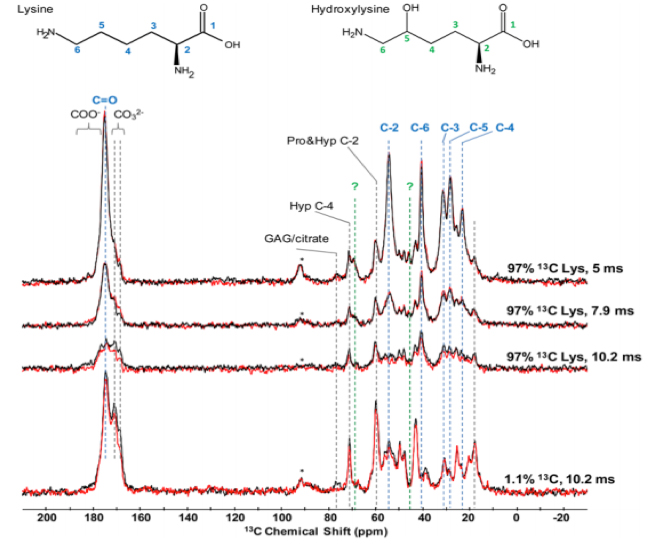The 13C NMR spectra are derived from the NMR spectroscopy based on carbon analysis. It is generated in the same fundamental as 1H NMR and allows the identification of carbon atoms in the target analyte. The 13C NMR is also an important tool in chemical structure determination in biopharmaceuticals. 13C NMR spectra detect the 13C isotope, only 1.1 % of naturally occurring carbon, and 12C isotope does not exhibit NMR behavior due to its nuclear spin. The 13C NMR spectra usually provide the following information:
- number of signals
To identify how many different carbons or equivalent carbons
- splitting of a signal
To identify how many hydrogens are attached to each carbon
- chemical shift
To identify the hybridization of each carbon (sp3, sp2, sp)
- integration
It is not useful due to variable relaxation times from C to C.
In addition, proton-coupled spectra show splitting of the carbon signal only when carbon are attached by protons.

Figure 13C {31P} REDOR MAS NMR spectra [1]
[1] NMR investigation of the role of osteocalcin and osteopontin at the organic-inorganic interface in bone. Ondřej Nikel, Langmuir., 2013, 29(45).






